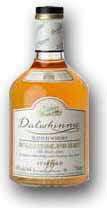Main Page | Frequently Asked Questions | Links | Whisky | Menu
Please note that these were previous years' whiskies, at least some of the 2004 whiskies will be different.


And of course there are others, but they're almost empty. I'll have them out, but there's only a dram or two remaining. I always have a touch of Laphroaig, and who knows what surprises will come out this year!
Here's a basic primer for the unacquainted: There are three generally accepted regions of Scotland which produce single-malt whisky (whiskey is similarly made, but non-Scottish): Highlands (click for map), Speyside (click for map) and Islay (click for map). Now, among those, there are finer distinctions, but there's no need to go into that now. Lowland whisky is not mentioned here, mainly because I'm less familiar with the triple-distilled (like Irish whiskey) liquor. Each region has its own characteristics, and certainly there are differences from distillery to distillery, even if those distilleries happen to stand right next to one another. Because most of my favorite whiskies happen to come from Islay, that's where I tend to concentrate.
Islay (pronounced EE- luh) is the southernmost island in the west Scottish island group known as the Hebrides, the most famous of which is Skye. It is beautiful, rugged country that faces the Atlantic, but is surprisingly warm for such an exposed area, due mainly to the Gulf Stream, with its warm waters coming from the southeastern United States (click here for a VERY detailed map). There are areas in the U.K. that even boast palm trees, though no one would mistake them for Florida! I digress. Because of the terrain, there is usually a tinge of sea (mainly salt and seaweed) flavor to Islay malts. But the main ingredient that gives the Ileach whiskies their distinction is the peat that grows on the island. Peat is decaying plant matter (mainly sphagnum moss, but not in all cases) that builds up in layers year after year. The peat is cut out of the ground there and dried and is used for many things, among which is to burn underneath the floor where the grain is dried. The spring water and river water that flows to the distillery also runs through peaty areas and further adds to the whisky. It makes for a most intense flavor, and to a number of people, makes the Islay malts undrinkable. But to their adherents, it is wonderfully strong and warming. Another area worth mentioning is the northernmost distillery in Scotland, and another of my all-time favorites: Highland Park. This tremendous drink is distilled in the main town of the Orkney Islands, Kirkwall. If you look on the map you'll also see another distillery there, Scapa, which is no longer in production. I have some of that wonderful malt, too, in two different years (see table). But Highland Park makes a wonderfully smooth and rich whisky. It has many of the characteristics of the Ileach malts, but somewhere in their distillation process, they have found a way to make theirs more smooth and mature. I have found, though, that the minimum age of the whisky should be 18 years. The 12-y.o. is nice, but the subtleties don't mature enough, in my opinion, for another 6 years. At some point, when I have more time, I'll explore the other regions...
More infoThe best whisky pages I can find are:
|